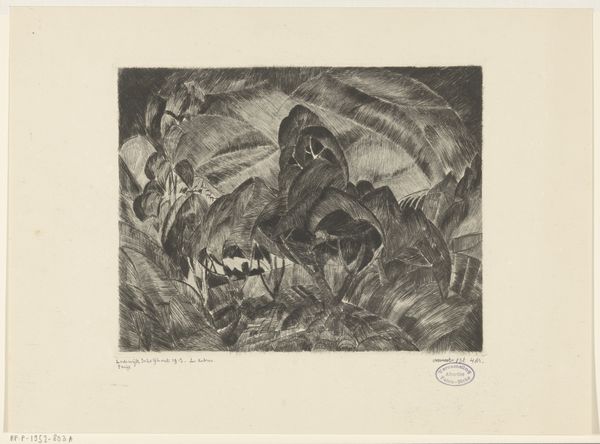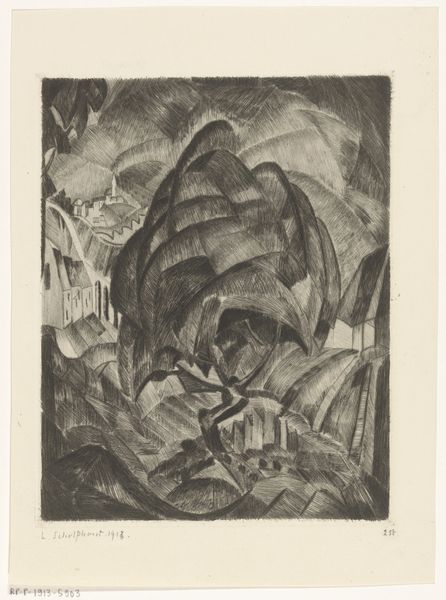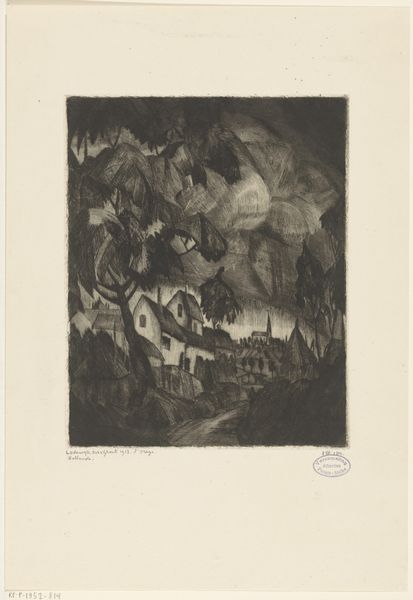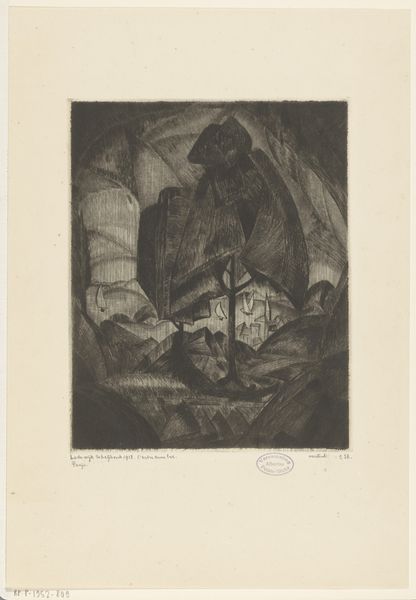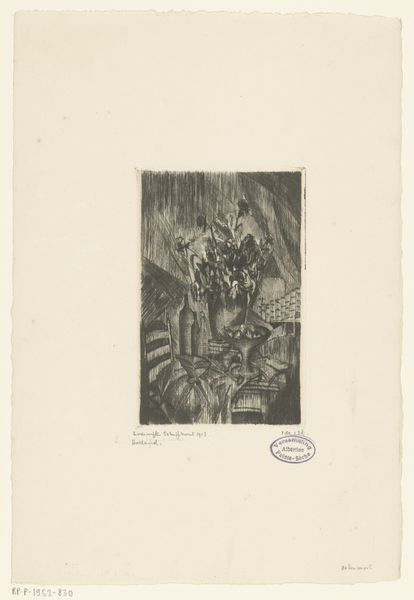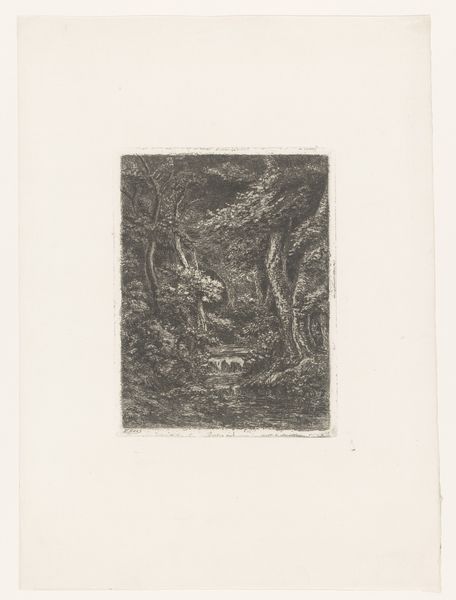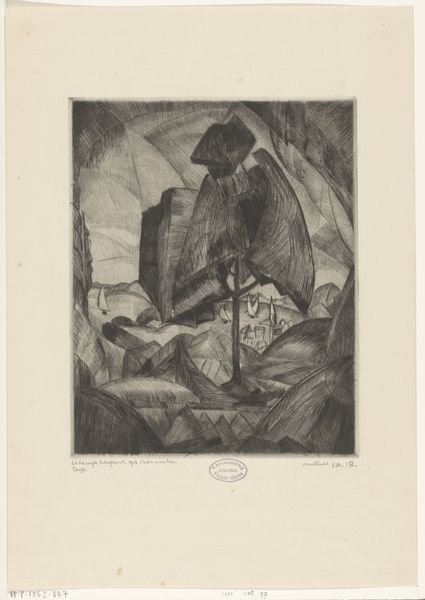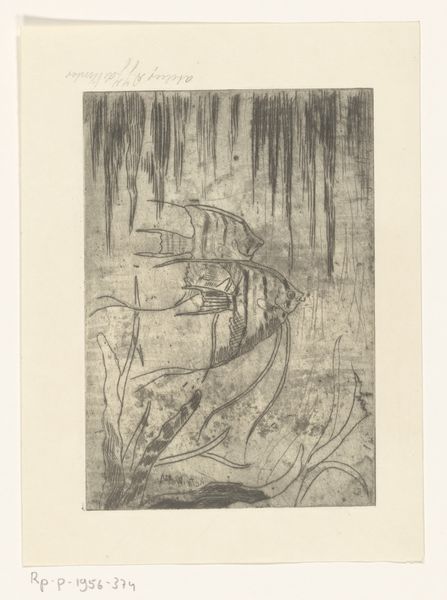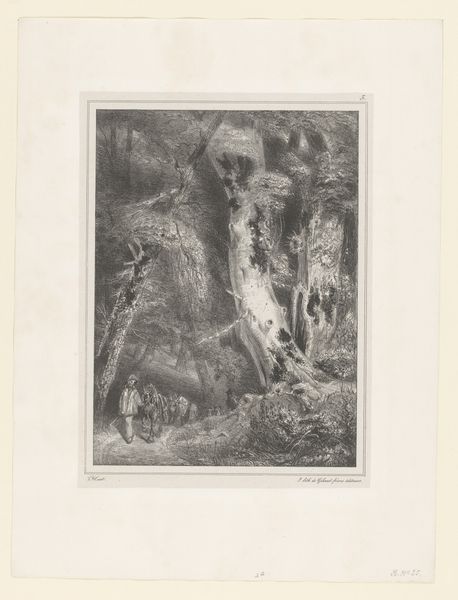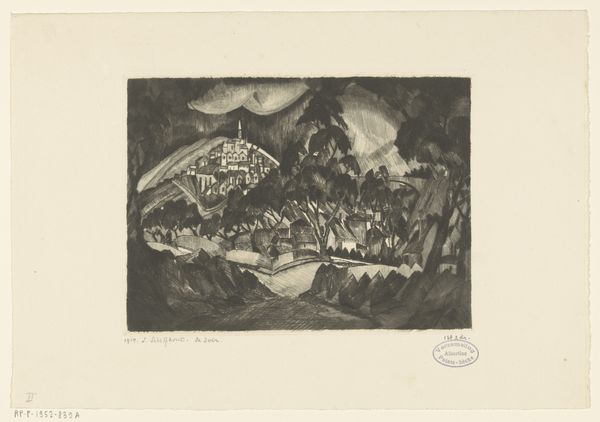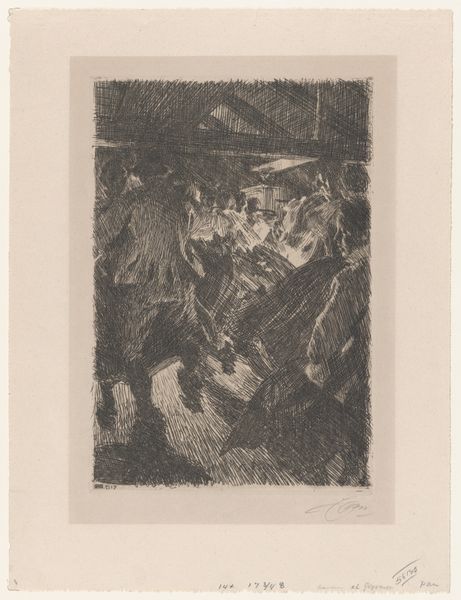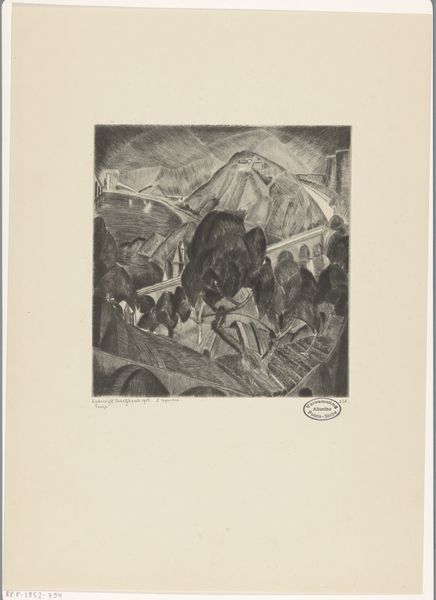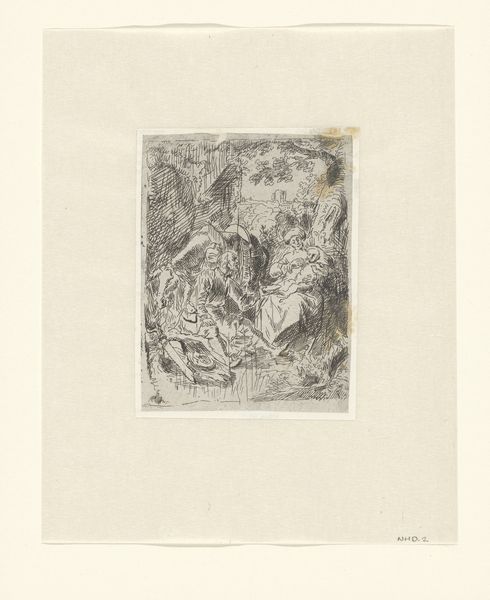
drawing, print, ink
#
pencil drawn
#
drawing
#
art-nouveau
# print
#
landscape
#
ink
#
geometric
#
cityscape
Dimensions: height 250 mm, width 195 mm, height 393 mm, width 277 mm
Copyright: Rijks Museum: Open Domain
Curator: Lodewijk Schelfhout’s “L’arbre,” or "The Tree," from 1913. What do you make of it? Editor: Well, it's certainly… angular. There’s a frenetic energy here; the dense crosshatching gives the whole image a sense of contained chaos. It's primarily executed in ink and pencil, right? Curator: Yes, predominantly ink on paper. What’s striking to me is how this drawing blends city and nature in early 20th-century Europe, right before the conflagration of the Great War. Schelfhout seems to represent a period that idealizes technology while retaining its nostalgia for the pre-industrial world. Editor: That urban-nature intersection is interesting. I'm looking at the lines—so many repetitive, precise strokes to construct these seemingly natural forms, really emphasizes labor. The medium itself, mass-produced ink, reflects this emerging industrial process that enables artists to explore the impact of such production techniques. Curator: Exactly, it seems almost contradictory, doesn’t it? It's as if the tree itself is being overtaken, transformed by the geometric lines of a rapidly urbanizing world. Is this an acceptance or a lament, I wonder? The image invites reflections on social progress and cultural identity amidst those significant societal shifts. Editor: It's ambiguous, definitely, but for me the impact lies in understanding the context in which artists operated—materials becoming more widely accessible impacts stylistic choices like this landscape depicted using almost industrial mark-making, challenging elitist conceptions surrounding craft. Curator: Do you think the relatively inexpensive availability of ink and printmaking democratized landscape art? Editor: It democratized its *production* yes—more artists experimenting and developing innovative techniques that question the established "high art" definitions that restricted what and how they were creating art. Curator: Very compelling indeed. It really brings home how technological developments influenced more than just subject matter. Editor: It all feeds into a system of material availability and accessibility that shapes what is, and what is not, considered artistically viable at a particular moment. It is there in the making of art. Curator: Food for thought! Now, to ponder how these tensions still manifest themselves today…
Comments
No comments
Be the first to comment and join the conversation on the ultimate creative platform.
